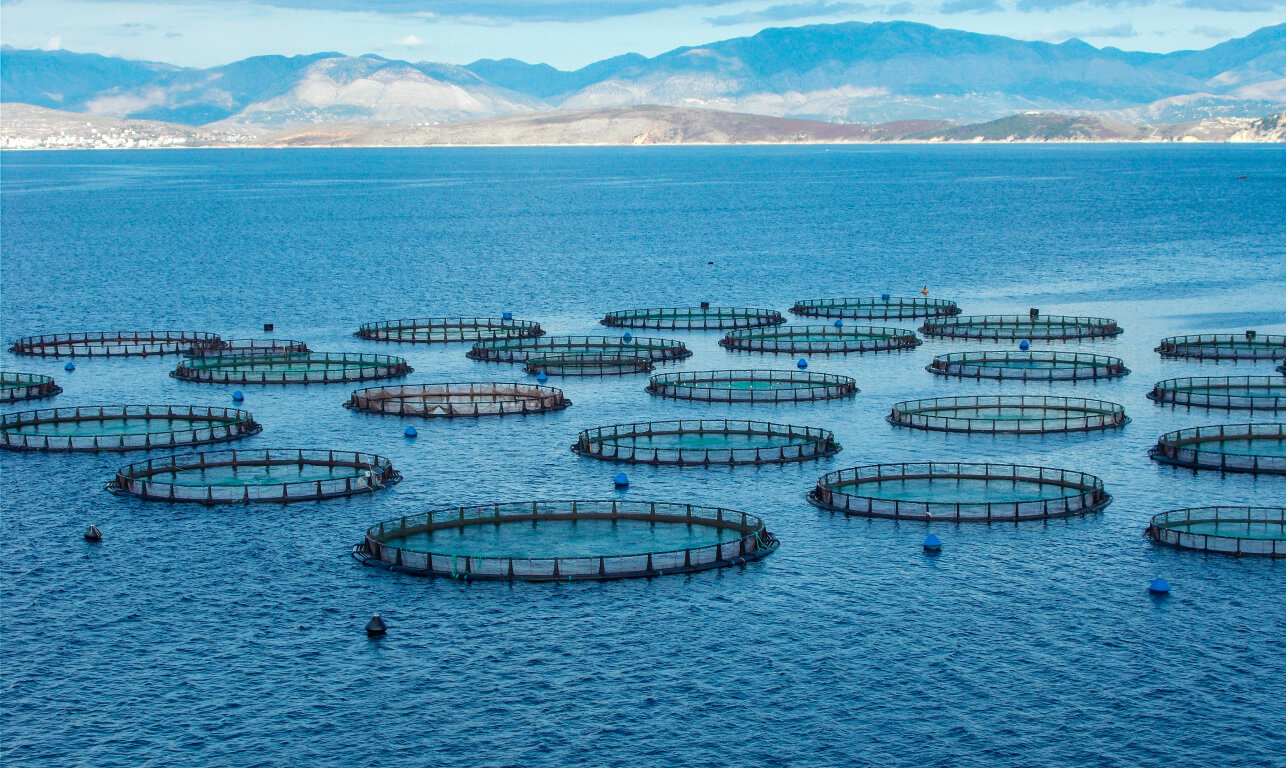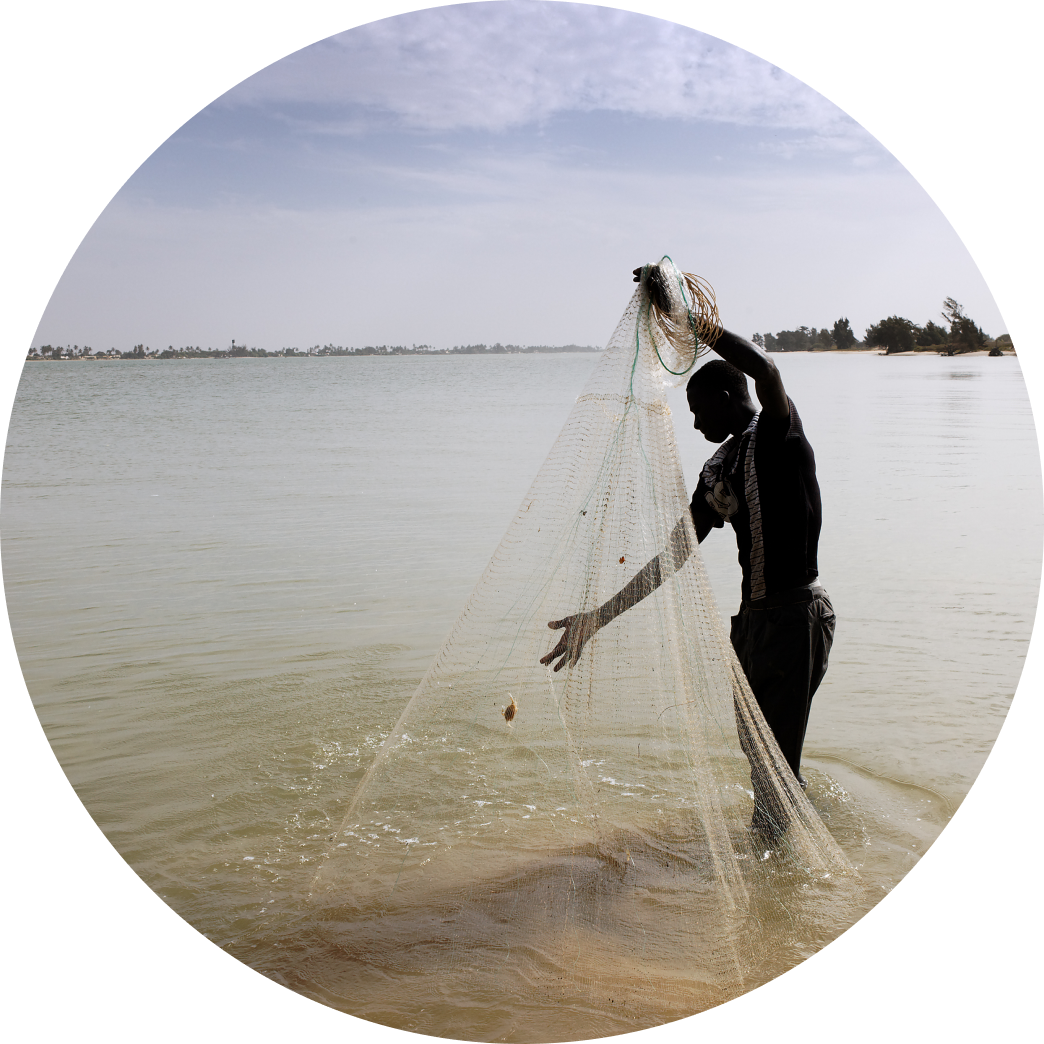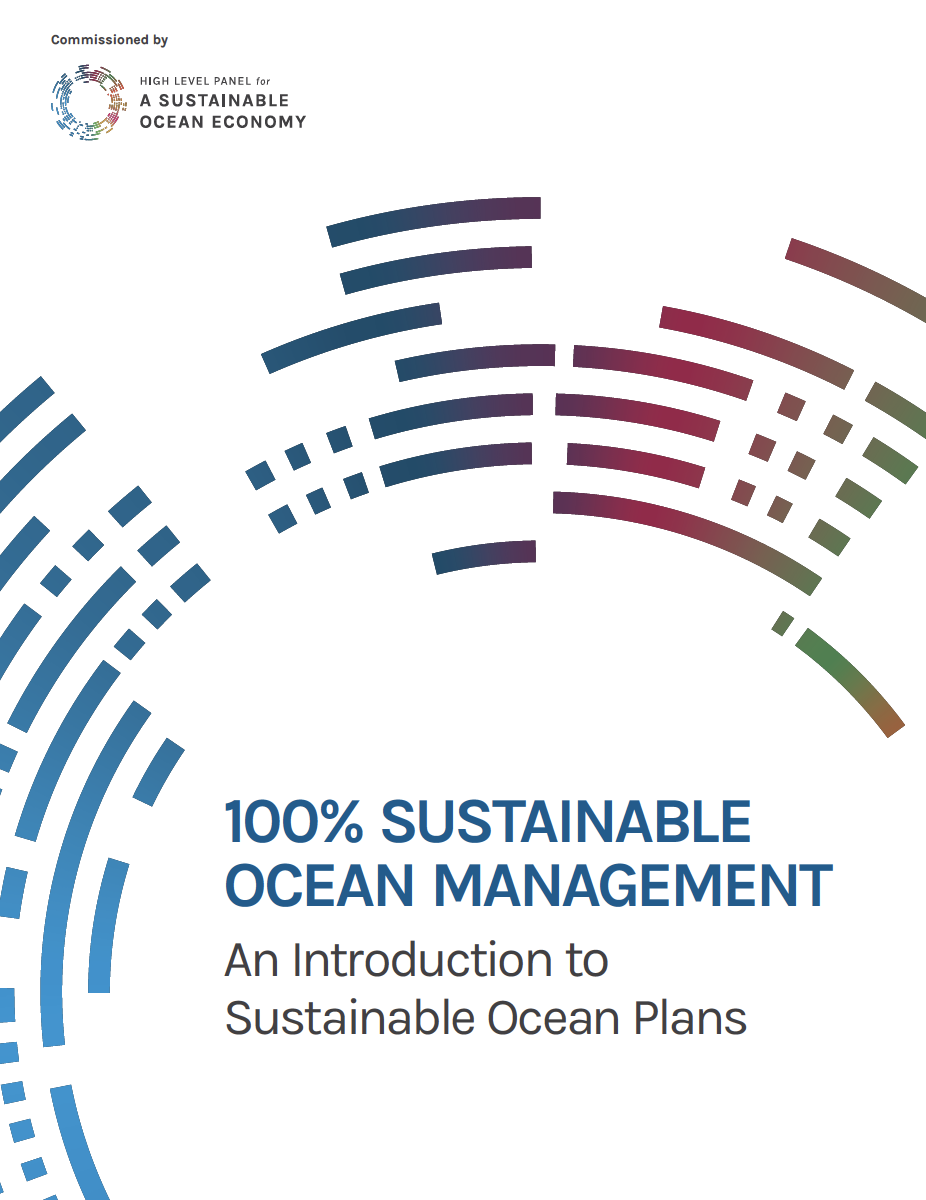In 2020, the members of the Ocean Panel committed to sustainably managing 100% of their ocean areas under national jurisdiction, guided by Sustainable Ocean Plans, by 2025.

A Global Commitment to Sustainable Oceans
A Pathway to a Healthy and Resilient Future
The guide, 100% Sustainable Ocean Management: An Introduction to Sustainable Ocean Plans, highlights the value of developing and implementing SOPs. These plans guide public and private sector decision-makers on how to sustainably manage 100% of a nation’s ocean area to advance long-term economic and social development—by protecting the natural marine ecosystems that underpin that development.
These plans constitute a unifying framework that brings together existing and new ocean-related plans, processes and policies into a coherent, integrated whole. The framework also reconciles conflicting uses of the ocean and its resources, building on and integrating existing mechanisms such as ocean industry sector development plans, marine spatial plans and area-based conservation and biodiversity measures.
An effective SOP embraces nine attributes:
- The process should be inclusive, integrative, iterative.
- The content should be place-based, ecosystem-based, knowledge-based.
- The impact should be endorsed, financed, capacitated.
But there is no one-size-fits all approach.
The target of achieving 100 percent sustainable ocean management through Sustainable Ocean Plans helps to address the twin dangers of climate change and biodiversity loss through cross-sectoral sustainable development. Sustainable ocean management can help unlock the ocean’s immense potential for climate action and building resilience, with SOPs acting as a vehicle to accelerate the implementation of ocean-based climate actions. These holistic frameworks can establish the necessary baselines within exclusive economic zones (EEZs) as a guide for protecting and managing areas beyond national jurisdiction.
Developing and implementing a Sustainable Ocean Plan is an iterative process that typically includes the following steps:
-
1
Getting Started
Establish the authority to initiate the planning process by raising awareness and organising relevant ministries. Prioritise country-specific goals through an inter-ministerial consultation and take stock of existing and missing components to determine the technical and financial support needed to launch the planning effort.
-
2
Setting the Scope and Preparing
Collaborate with stakeholders to establish a vision for the country’s sustainable ocean economy, focusing on protection, sustainable production, and equitable prosperity, with clear goals and priorities. Determine the geospatial boundaries for the plan, including the ecosystems covered. This could involve a single comprehensive plan or a set of integrated sub-jurisdiction plans. Establish cross-sectoral and cross-stakeholder coordination mechanisms that unite relevant government bodies, ocean economic sector representatives, scientists, non-governmental organisations (NGOs), and local communities, ideally integrating existing ocean-related processes within the country. Additionally, assess current knowledge, plans, and processes by compiling existing ocean-related plans and comparing them against the nine attributes and components of Sustainable Ocean Plans to identify existing strengths and gaps.
-
3
Developing the Plan
Conduct an inclusive and integrative process to develop the plan. Ensure the plan reflects all nine attributes of SOPs and includes the appropriate components. In addition, ensure the plan includes specific goals, indicators and means of monitoring over time.
-
4
Implement and/or Updating
Pursue the measures (e.g. government policies, business practices, financing investments) needed to implement the Sustainable Ocean Plan over time. As SOPs are iterative in nature, periodically monitor and update the plan as implementation unfolds; economic, social and/or environmental conditions evolve; and/or the state of knowledge improves.
Two activities to pursue continually throughout the SOP development process include:
Preparing or Gathering Knowledge
Pursue the measures (e.g. government policies, business practices, financing investments) needed to implement the Sustainable Ocean Plan over time. As SOPs are iterative in nature, periodically monitor and update the plan as implementation unfolds; economic, social and/or environmental conditions evolve; and/or the state of knowledge improves. This needs to pursue continuously during the entire process of developing and implementing a Sustainable Ocean Plan.
Engaging Stakeholders
Identify and engage relevant stakeholders—including government, industry, financiers, research institutions, NGOs, local communities, and Indigenous Peoples—early in the process to balance interests, build legitimacy, avoid conflicts, and ensure broad support. This needs to pursue continuously during the entire process of developing and implementing a Sustainable Ocean Plan.
Progressive Steps Toward 100% Sustainable Ocean Management
It’s important to note that countries are at different stages in their
journey towards sustainable ocean management. The goal is to achieve 100% sustainable management of a country’s Exclusive Economic Zone (EEZ), gradually expanding the scopes of their management efforts over time. This phased approach allows for learning, capacity building, and adaptive management as countries work towards comprehensive coverage. Specific steps and timeline for reaching full coverage may vary across countries, reflecting different starting points and needs.
Country: Australia
Status: Developing
Country: Canada
Status: Developing
Country: Chile
Status: Implementing & Updating
Country: Fiji
Status: Implementing & Updating
Country: France
Status: Implementing & Updating
Country: Ghana
Status: Setting the Scope & Preparing
Country: Indonesia
Status: Implementing & Updating
Country: Jamaica
Status: Setting the Scope & Preparing
Country: Japan
Status: Implementing & Updating
Country: Kenya
Status: Getting Started
Country: Mexico
Status: Developing
Country: Namibia
Status: Getting Started
Country: Norway
Status: Implementing & Updating
Country: Palau
Status: Developing
Country: Portugal
Status: Implementing & Updating
Country: Seychelles
Status: Implementing & Updating
Country: United Kingdom
Status: Setting the Scope & Preparing
Country: United States
Status: Implementing & Updating
See Appendix B for a list of Ocean Panel Member’s Sustainable Ocean Plans and expected publication timelines.
9 core attributes of a Sustainable Ocean Plan
The figure below presents an assessment of the Ocean Panel’s progress in developing and implementing Sustainable Ocean Plans, as per the self-assessment surveys completed by Ocean Panel members, focusing on how well they align with the nine core attributes necessary for effective, sustainable ocean management (see 100% Sustainable Ocean Management: An Introduction to Sustainable Ocean Plans)
 Inclusive
Inclusive
Is the plan’s development process inclusive?
The stakeholder groups most actively engaged in the SOP planning process outside of government are NGOs and industry.
 Integrative
Integrative
Does the plan integrate government agencies, sectors and processes?
Most Ocean Panel countries have a cross-sectoral mechanism already in place, formally established through policies, agreements or official documentation, with 14 countries having one established and 1 in progress.
 Iterative
Iterative
Is the plan’s process iterative?
7 Ocean Panel countries have a monitoring, evaluation and learning (MEL) plan in place to verify agreed-upon goals; 7 have MEL plans currently under development; and 4 do not have one in place yet (as some countries are just getting started developing their plans).
 Place-Based
Place-Based
Does the plan address the entire marine/ocean area under national jurisdiction?
All Ocean Panel SOPs aim to achieve 100% coverage of the ocean area under national jurisdiction. While some countries have already attained this goal, others are still working towards it. These plans are iterative and aim to progressively expand coverage.
 Ecosystem-Based
Ecosystem-Based
Is the plan grounded in an ecosystem-based approach?
16 countries include or intend to include marine protected areas and other effective area-based conservation measures in their plans, while 10 include or intend to include blue carbon restoration and/or conservation (mangroves, seagrasses and tidal salt marshes).
 Knowledge-Based
Knowledge-Based
Is the plan underpinned by knowledge and evidence?
In developing their plans, all Ocean Panel countries incorporate various knowledge sources, with 12 of them utilising peer-reviewed scientific articles and online databases and repositories.
 Endorsed
Endorsed
Is there national political support for a Sustainable Ocean Plan?
15 COUNTRIES
Political commitments related to the Sustainable Ocean Plan or the 100% approach have been publicly communicated through official statements, speeches, or endorsements
14 PLANS
Supported by legislative measures or policies, these plans strengthen their legal and institutional backing.
 Financed
Financed
Is there sufficient financing for sustainable ocean planning?
8 Ocean Panel members currently have a mechanism or strategy in place to ensure accountability in the use of allocated funds for plan implementation, while the remaining members have mechanisms or strategies in development.
 Capacitated
Capacitated
Is there sufficient human capacity for the plan?
8 Ocean Panel countries currently have sufficiently trained personnel to support effective plan implementation, while 3 are in the process of building sufficient support.
Ocean Action 2030
Ocean Action 2030 was formed in response to the Ocean Panel's 2020 agenda, which outlined a vision for sustainable ocean development, emphasizing protection, production, and prosperity.
This voluntary coalition supports countries in building a sustainable ocean economy through Sustainable Ocean Plans, providing technical and financial assistance from leading institutions to match country needs with member capacities.
Rapid Assistance Fund
Countries must sustainably manage 100% of their oceans to tap into their full potential. Ocean-based solutions can significantly reduce global emissions by up to 35%, but they’re often underfunded. Comprehensive management not only preserves ocean health but also attracts investments and job creation, benefiting coastal communities and economies.
However, securing large-scale financing can be slow and doesn’t address immediate needs like technical advice. The Rapid Assistance Fund fills this gap by offering swift access to smaller grants, facilitating the development of Sustainable Ocean Plans. This support helps bridge the financial divide, accelerating progress towards a sustainable ocean economy.



